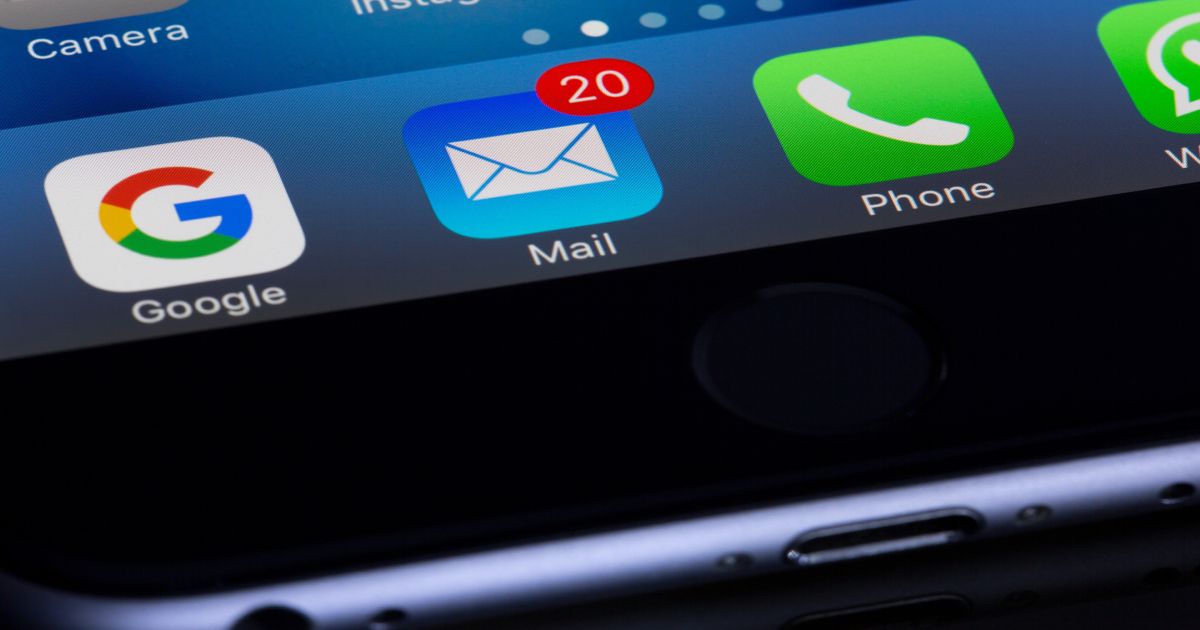Email Marketing 101: Everything You Should Know

Email marketing is a powerful tool that can help businesses connect with their audience, promote products or services, and build lasting relationships. In today's digital age, email remains one of the most effective and direct ways to reach potential customers.
If you're new to email marketing or looking to enhance your email campaigns, this guide will provide you with a comprehensive overview of what you need to know.
1) Understanding Email Marketing

Email marketing is a versatile and effective way for businesses and organizations to engage with their audience, build relationships, and achieve various marketing goals. Whether you're aiming to drive sales, increase website traffic, promote brand awareness, or simply keep your subscribers informed, email marketing can be tailored to suit your objectives. It allows you to reach your target audience directly in their inbox, where they are more likely to pay attention to your message.
Successful email marketing goes beyond simply broadcasting messages. It involves crafting compelling subject lines, creating engaging content, optimizing for mobile devices, and analyzing data to continually improve campaign performance. When done effectively, email marketing can drive engagement, boost brand loyalty, and ultimately lead to conversions. Whether you're a small business owner, a nonprofit organization, or a large corporation, email marketing can be a powerful tool in your marketing arsenal when used strategically.
2) Growing Your Email List

Your email list serves as the bedrock of your email marketing endeavors, and its quality and relevance are paramount for the success of your campaigns. To construct and nurture a robust email list, consider implementing several proven strategies:
- Create High-Quality Content: One of the most effective ways to attract subscribers is by consistently delivering valuable content. This content could be in the form of blog posts, e-books, webinars, or any other resource that aligns with your audience's interests. When people find your content helpful and informative, they are more likely to subscribe to receive future updates via email.
- Opt-In Forms: Place opt-in forms strategically on your website, landing pages, and even within blog posts. These forms should be easy to find and use, encouraging visitors to subscribe effortlessly. You can offer incentives like exclusive content, discounts, or freebies to entice users to sign up.
- Social Media Promotion: Leverage your social media channels to promote your email newsletter. Share snippets of your email content, run contests or giveaways that require email sign-up, and use call-to-action buttons on your profiles to drive visitors to your subscription page.
- Referral Programs: Encourage your current subscribers to refer friends and colleagues to join your email list. You can incentivize this with rewards or recognition.
- Events and Webinars: Hosting online events, webinars, or workshops can be an excellent way to capture email addresses. Require attendees to register with their email to access the event.
- E-commerce Integration: If you run an online store, integrate email sign-up options during the checkout process. You can also offer discounts or special offers in exchange for an email subscription.
- Content Upgrades: Enhance your blog posts with content upgrades - bonus materials like e-books, templates, or checklists that users can download in exchange for their email address.
- Guest Blogging: Write guest posts for other websites in your niche and include links back to your site, where visitors can subscribe to your newsletter.
3) Segmentation and Personalization

Segmentation is a powerful tool in email marketing that enables you to deliver targeted and personalized content to different subsets of your audience. By dividing your email list into segments based on specific criteria, such as demographics, location, purchase history, or engagement level, you can craft messages that resonate with each group's unique interests and needs. For example, you can send exclusive promotions to loyal customers, product recommendations to those who have made previous purchases, or location-specific updates to subscribers in different regions. Segmenting your list not only boosts engagement but also enhances your chances of converting subscribers into customers.
Personalization takes email marketing to the next level by creating a one-to-one connection with your recipients. Beyond addressing them by their first name, you can use personalized product recommendations, tailored content, and dynamic elements that change based on the recipient's behavior or preferences. When subscribers receive emails that feel customized to their interests and previous interactions, they are more likely to open, read, and act on your messages. This not only improves your email metrics but also fosters stronger customer relationships and drives better results for your business. In the era of information overload, personalization is the key to standing out in your subscribers' crowded inboxes.
4) Crafting Effective Emails

Effective email marketing relies on the creation of well-crafted emails that not only capture your audience's attention but also engage and convert them into loyal customers. To achieve this, consider implementing the following tips:
- Compelling Subject Lines: The subject line is your first opportunity to entice recipients to open your email. Craft subject lines that are concise, intriguing, and relevant to the email's content. Consider using personalization to address recipients by their first names, and experiment with different tactics like posing questions, creating a sense of urgency, or teasing the content inside.
- Relevant and Valuable Content: Once the email is opened, the content must live up to the promise of the subject line. Keep the content clear, concise, and tailored to your audience's interests and needs. Make sure that the main message is visible without the need for excessive scrolling, and consider using bullet points, subheadings, and visuals to break up text and make it more scannable.
- Compelling Visuals: Visual elements, such as images, infographics, and videos, can greatly enhance the appeal of your emails. However, ensure that these visuals are relevant to the content and add value to the message. Optimize images to load quickly, and always include alt text for accessibility and in case images don't display properly.
- Clear Call to Action (CTA): Every email should have a clear and persuasive CTA that guides recipients on the desired action, whether it's making a purchase, signing up for a webinar, or downloading an ebook. Use action-oriented language, and make the CTA button or link visually stand out.
- Mobile Optimization: With a significant portion of email opens occurring on mobile devices, it's crucial to ensure that your emails are mobile-responsive. Test your emails on various devices and email clients to guarantee that they display correctly and are easy to interact with on small screens.
- Personalization: Personalizing your emails goes beyond just addressing recipients by their first names. Segment your email list based on demographics, behavior, or purchase history, and tailor your content to each group's preferences. Incorporate dynamic content to customize elements within the email, making it even more relevant to the individual recipient.
- A/B Testing: To continually improve your email marketing performance, conduct A/B tests on various elements such as subject lines, email copy, images, and CTAs. Analyze the results to determine which variations resonate best with your audience, and use these insights to refine your email strategies over time.
- Consistency: Maintain a consistent email schedule to keep your audience engaged. Whether you send emails weekly, bi-weekly, or monthly, stick to your schedule so recipients know when to expect your messages. This consistency can help build anticipation and trust among your subscribers.
- Compliance and Unsubscribe Options: Always comply with email marketing regulations like CAN-SPAM and GDPR. Include a clear and easy-to-find option for recipients to unsubscribe from your emails. Honoring unsubscribe requests promptly is not only legally required but also demonstrates respect for your audience's preferences.
5) Compliance with Regulations

Navigating the legal landscape of email marketing is crucial to maintain the trust of your subscribers and avoid potential legal consequences. In the United States, the CAN-SPAM Act sets strict guidelines for commercial email communication. Under CAN-SPAM, it's essential to obtain explicit consent from recipients before sending them marketing emails, clearly identify your messages as advertisements, include a physical mailing address, offer a straightforward way for recipients to opt out of future emails, and promptly honor unsubscribe requests. Failing to comply with these regulations can result in significant fines and harm to your brand's reputation.
On the other side of the Atlantic, the General Data Protection Regulation (GDPR) governs email marketing practices in Europe. GDPR requires businesses to obtain clear and unambiguous consent from individuals before sending them marketing emails. Additionally, it mandates that individuals have the right to access their data, correct inaccuracies, and request deletion of their information. Complying with GDPR involves stringent data protection measures, such as secure storage and the ability to provide individuals with their data upon request. Regardless of your location, adhering to email marketing regulations not only keeps you on the right side of the law but also demonstrates your commitment to respecting your subscribers' privacy and maintaining a positive brand image.
6) Measuring and Analyzing Results

Email marketing platforms offer a wealth of data and analytics to help you understand how your campaigns are performing and make data-driven decisions. One of the primary metrics to monitor is the open rate, which tells you the percentage of recipients who opened your email. A high open rate suggests that your subject line and email content are engaging, while a low open rate may indicate room for improvement. Click-through rate (CTR) is another critical metric, measuring the percentage of recipients who clicked on links within your email. This metric reflects the effectiveness of your email's call-to-action and the relevance of your content.
Conversion rate is arguably the most vital metric, as it measures the percentage of recipients who took the desired action after clicking on your email, such as making a purchase or signing up for a newsletter. Understanding your conversion rate helps you assess the overall success of your email marketing campaigns in achieving your business goals. Lastly, it's essential to keep an eye on the unsubscribe rate, which indicates how many recipients opted out of receiving future emails. A high unsubscribe rate may signal that your emails are not meeting the expectations of your subscribers or that your frequency of communication is too high. By regularly analyzing these metrics and making data-driven adjustments to your email marketing strategy, you can optimize your campaigns for better results and higher engagement.
7) Automation and Drip Campaigns

Automation tools like Mailchimp and Constant Contact have revolutionized email marketing by enabling the creation of highly targeted and personalized drip campaigns. These campaigns can be designed to deliver the right message to the right person at the right time, improving engagement and conversion rates. For example, you can set up a drip campaign to welcome new subscribers with a series of onboarding emails that introduce them to your brand, products, and services. By automating this process, you ensure that every new subscriber receives a consistent and informative welcome, regardless of when they sign up.
Additionally, automation allows you to re-engage with inactive subscribers. You can set triggers to send re-engagement emails to subscribers who haven't interacted with your emails for a specified period. These emails can offer incentives, such as special discounts or exclusive content, to entice subscribers back into your active audience. By automating these re-engagement efforts, you can potentially recover valuable leads and customers without manual intervention, saving time and resources while maximizing the potential of your email list. Automation tools offer flexibility and customization, allowing businesses to tailor their email marketing strategies to meet specific goals and objectives effectively.
8) A/B Testing

A/B testing, also known as split testing, is a vital component of email marketing that enables you to refine your email campaigns for maximum effectiveness. This strategy involves sending different versions of an email to separate segments of your audience to determine which one performs better. By conducting A/B tests, you gain valuable insights into what resonates most with your subscribers, allowing you to fine-tune your email content and strategies.
To conduct an A/B test effectively, you'll need to choose a specific element to test, such as subject lines, email content, call-to-action buttons, or even the timing of your sends. For instance, you could send one version of an email with a witty subject line and another with a straightforward one to see which garners a higher open rate. The winning version, based on the selected metric (e.g., open rate, click-through rate, conversion rate), should then become the template for future campaigns. Over time, this data-driven approach helps you tailor your email marketing efforts to your audience's preferences, ultimately leading to higher engagement and improved results.
9) Email Deliverability

Email deliverability is a critical aspect of successful email marketing. It refers to the ability of your emails to reach your intended recipients' inboxes rather than being relegated to the spam folder. Ensuring high deliverability rates is essential to maximize the impact of your email campaigns and maintain a positive sender reputation.
To improve email deliverability, several best practices should be followed. First, maintain a clean email list by regularly removing inactive or bouncing email addresses. Sending emails to invalid addresses or disengaged subscribers can negatively impact your sender reputation. Second, adhere to email marketing regulations and guidelines, such as the CAN-SPAM Act (in the United States) or GDPR (in Europe), which require transparency, proper consent, and clear unsubscribe options. Third, choose a reputable email service provider (ESP) known for its deliverability rates and anti-spam measures. ESPs often have the infrastructure and tools to help you maintain good email deliverability, including monitoring and managing your sender reputation. By following these best practices and staying vigilant about your email list hygiene, you can significantly enhance the chances of your emails reaching your audience's inboxes.
10) Continuous Improvement

Email marketing is a dynamic and evolving field, and success in this domain hinges on the willingness to adapt and refine your strategies continually. To stay competitive and maximize the impact of your email campaigns, it's essential to embrace a mindset of ongoing improvement. One of the primary ways to achieve this is by regularly analyzing the results of your email campaigns. Pay close attention to key metrics like open rates, click-through rates, conversion rates, and unsubscribe rates. By understanding how your emails are performing, you can identify strengths and weaknesses in your strategy.
Seeking feedback from your subscribers and recipients is another valuable step in the journey of improving your email marketing efforts. Encourage your audience to provide input through surveys or by responding to your emails. Understand their preferences, pain points, and expectations. This insight can be invaluable in tailoring your content and approach to better align with what your audience values and responds to. Furthermore, keeping a vigilant eye on industry trends and staying updated with best practices in email marketing can help you remain relevant and effective. By combining data-driven analysis, customer feedback, and industry insights, you can ensure that your email marketing strategy remains agile and responsive to the ever-changing landscape of digital communication.
Pros of Email Marketing
- Cost-Effective: Email marketing is highly cost-effective compared to traditional marketing channels like print or TV ads. It requires minimal investment in tools and resources.
- High ROI: When executed well, email marketing can deliver a high return on investment (ROI). The ability to reach a targeted audience and drive conversions makes it a valuable marketing strategy.
- Targeted Messaging: Email allows you to segment your audience and send personalized messages. This targeted approach can lead to higher engagement and conversion rates.
- Automation: Automation tools enable you to set up drip campaigns, autoresponders, and personalized workflows, saving time and effort while maintaining consistent communication.
- Analytics: Email marketing platforms provide detailed analytics, allowing you to track the performance of your campaigns. You can measure open rates, click-through rates, and conversion rates to optimize your strategy.
Cons of Email Marketing
- Overwhelmed Inboxes: Subscribers' inboxes are often flooded with emails, making it challenging for your messages to stand out. Competition for attention is fierce.
- Spam Filters: Email filters are designed to catch spam, but they can sometimes flag legitimate marketing emails as well. This can affect deliverability and open rates.
- List Management: Maintaining a clean and engaged email list can be challenging. Subscribers may unsubscribe or become inactive over time, requiring constant list management.
- Content Quality: Crafting compelling and relevant email content is essential. Poorly designed or irrelevant emails can lead to unsubscribes and damage your brand's reputation.
- Regulatory Compliance: Email marketing is subject to regulations like the CAN-SPAM Act and GDPR. Non-compliance can result in legal issues and fines.
Top Email Marketing Tools
- Mailchimp: Mailchimp is a popular email marketing platform known for its user-friendly interface. It offers automation features, audience segmentation, and A/B testing to optimize campaigns.
- Constant Contact: Constant Contact is known for its simplicity and ease of use. It provides customizable templates, list management, and basic automation features.
- HubSpot: HubSpot's marketing automation platform provides a suite of tools, including email marketing, CRM, and lead nurturing. It's a great choice for businesses looking for comprehensive inbound marketing solutions.
- ActiveCampaign: ActiveCampaign is known for its robust automation capabilities. It offers email marketing, CRM, and marketing automation in one platform. It's suitable for businesses of all sizes.
- GetResponse: GetResponse is an all-in-one marketing platform that includes email marketing, landing pages, and marketing automation. It offers a visual automation builder for creating complex workflows.
- ConvertKit: ConvertKit is designed for bloggers, creators, and small businesses. It focuses on simplicity and automation, making it easy to create email sequences and segment your audience.
- Drip: Drip is an e-commerce-focused email marketing automation tool. It offers advanced tagging and segmentation, allowing you to create highly personalized email campaigns.
- Eloqua: Oracle Eloqua is an enterprise-level marketing automation tool with advanced features for large organizations. It offers extensive reporting and analytics capabilities.
Final Thoughts
In conclusion, email marketing remains a powerful and cost-effective tool for businesses to engage with their audience, drive conversions, and achieve their marketing goals.
By understanding the fundamentals, building a quality email list, crafting compelling content, and staying compliant with regulations, you can harness the full potential of email marketing to grow your business.





